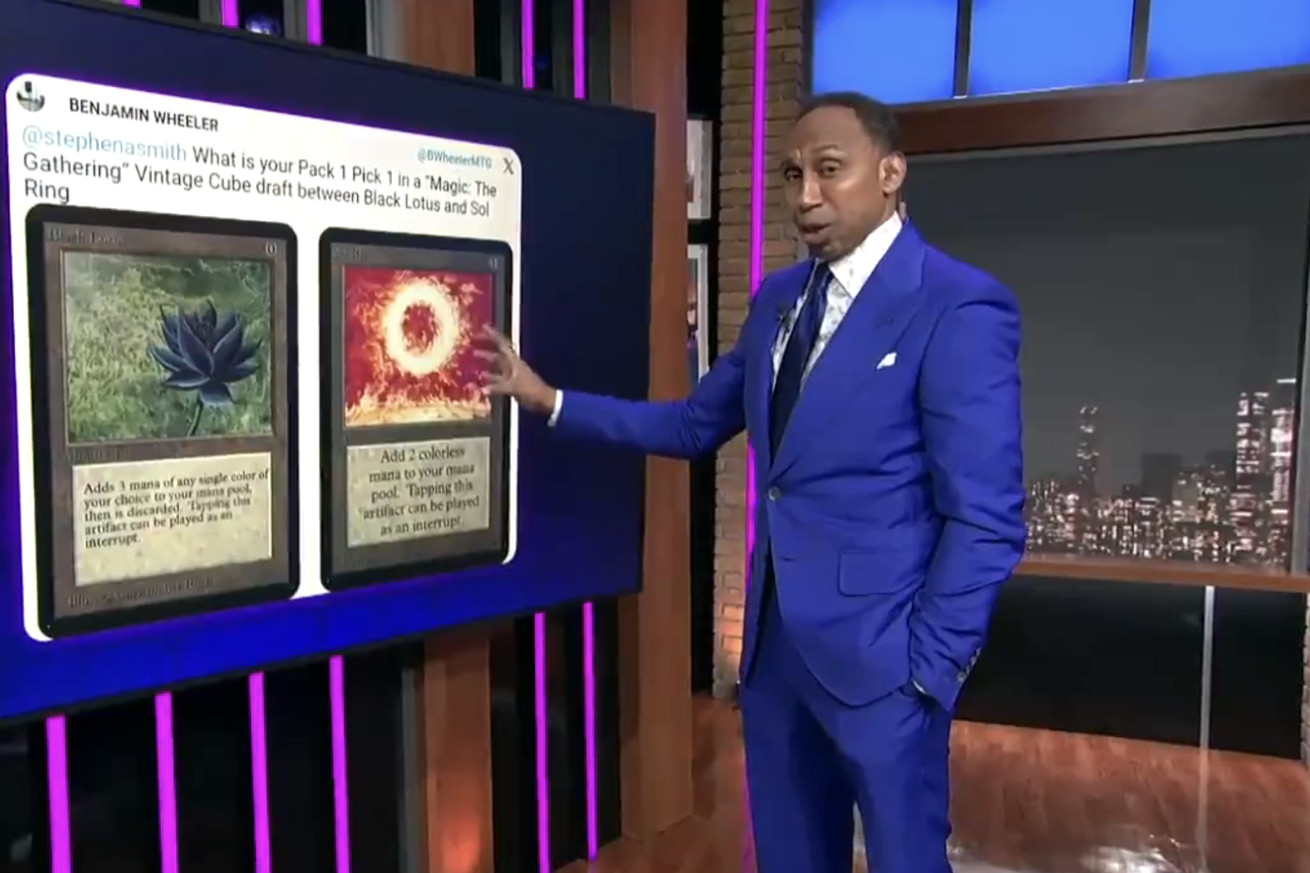Who knew Stephen A. Smith is a genius in the world of card games too?
There is no doubt that the best part of The Stephen A. Smith Show has become the willingness to answer any and every question with confidence. Soliciting questions from the internet, Stephen A. is never short for an answer to some of life’s biggest quandaries — including whether you should pick Black Lotus or Sol Ring in a Magic: The Gathering vintage cube draft.
I understand the venn diagram of sports writers and die-hard MtG players is probably me and someone I’ve never met. So let me break down why Smith made a brilliant choice, even though Black Lotus is a card which has sold for $3 million for a single card, and is widely regarded as the most powerful and broken card ever printed, while Sol Ring costs less than $1.
What do these cards actually do?
Both Black Lotus and Sol Ring are examples of “ramp,” cards which generate more mana than their cost, allowing a player to cast spells earlier than expected. In MtG mana is the resource used to cast spells, so being able to cast more spells, or more powerful spells gives a player a distinct edge.
Black Lotus: Costs 0 mana to play, and can generate three mana of any one color, at which point it is put in the graveyard. This means on turn one a player could use a land and a Lotus to cast a four converted mana cost spell — giving a massive advantage.
Sol Ring: Costs 1 mana to play, and generates two colorless mana when tapped. This means a player would need to tap their land to play Sol Ring, and either cast something which costs up to two colorless, or pass the turn. HOWEVER, unlike Black Lotus, Sol Ring remains on the battlefield where it can be used every turn.
Stephen A. Smith picked Sol Ring, and he’s absolutely right
This is a question of format
Black Lotus is an absolute top pick in the world of constructed vintage, but the viewer’s question was about the pack one, pick one in a vintage cube draft. A draft cube is a curated collection of cards, created by an individual, and then placed into packs to allow for a group of players to hold a draft tournament. So the process relies on players thinking on the fly to select cards to build a complementary deck from the ground up.
Constructed, where a player forms a honed deck ahead of time is where Lotus shines. It enables explosive turn one plays with momentum helping to build into a turn two or three win. However, the variance introduced in cube draft means that it’s much more difficult to form obvious combos. Thus, Sol Ring will provide much, much better value over the course of a game.
If Stephen A. picked Black Lotus it would pigeonhole him into an aggro strategy. While the majority of vintage is inherently aggressive, the Sol Ring opens up more avenues in future picks to either form a control deck, or play in more colors without the risk that Lotus could become a dead draw later in the game if he’s not mono-colored.
I can see arguments both ways, but as someone who has been playing Magic: The Gathering since revised in 1994, I can tell you that while Lotus is the show pony, real players know that Sol Ring is going to dominate in a draft environment.
Stephen A. Smith knows all.













